Better All the Time #35
 | ||
|
This weekend gives us a little breather between having the Democrats telling us that they've got the cure for the world going to hell in a handbasket and the Republicans telling us that everything is fine but that the world will go to hell in a handbasket if we let the other side take over. So let's have a look at how well things actually are going these days, irrespective of (and perhaps in spite of) what the politicians have to say.
But just to show how generous our perspective really is, we'll start out with some truly wonderful news that's all about the changing face of politics in America.
|
I have a dream that one day this nation will rise up and live out the true meaning of its creed: "We hold these truths to be self-evident: that all men are created equal."
I have a dream that one day on the red hills of Georgia the sons of former slaves and the sons of former slave owners will be able to sit down together at the table of brotherhood.
I have a dream that one day even the state of Mississippi, a state sweltering with the heat of injustice, sweltering with the heat of oppression, will be transformed into an oasis of freedom and justice.
I have a dream that my four little children will one day live in a nation where they will not be judged by the color of their skin but by the content of their character.
I have a dream today.
I have a dream that one day, down in Alabama, with its vicious racists, with its governor having his lips dripping with the words of interposition and nullification; one day right there in Alabama, little black boys and black girls will be able to join hands with little white boys and white girls as sisters and brothers.
I have a dream today.
I have a dream that one day every valley shall be exalted, every hill and mountain shall be made low, the rough places will be made plain, and the crooked places will be made straight, and the glory of the Lord shall be revealed, and all flesh shall see it together.
This is our hope. This is the faith that I go back to the South with. With this faith we will be able to hew out of the mountain of despair a stone of hope. With this faith we will be able to transform the jangling discords of our nation into a beautiful symphony of brotherhood. With this faith we will be able to work together, to pray together, to struggle together, to go to jail together, to stand up for freedom together, knowing that we will be free one day.
This will be the day when all of God's children will be able to sing with a new meaning, "My country, 'tis of thee, sweet land of liberty, of thee I sing. Land where my fathers died, land of the pilgrim's pride, from every mountainside, let freedom ring."
And if America is to be a great nation this must become true. So let freedom ring from the prodigious hilltops of New Hampshire. Let freedom ring from the mighty mountains of New York. Let freedom ring from the heightening Alleghenies of Pennsylvania!
Let freedom ring from the snowcapped Rockies of Colorado!
Let freedom ring from the curvaceous slopes of California!
But not only that; let freedom ring from Stone Mountain of Georgia!
Let freedom ring from Lookout Mountain of Tennessee!
Let freedom ring from every hill and molehill of Mississippi. From every mountainside, let freedom ring.
And when this happens, when we allow freedom to ring, when we let it ring from every village and every hamlet, from every state and every city, we will be able to speed up that day when all of God's children, black men and white men, Jews and Gentiles, Protestants and Catholics, will be able to join hands and sing in the words of the old Negro spiritual, "Free at last! free at last! thank God Almighty, we are free at last!"
Martin Luther King Jr.
Item 1
‘I Have a Dream’ — 45 Years Later
Forty-five years to the day since 1960s civil rights leader King gave his famous "I have a dream" speech, Obama was set to accept his nomination as the first black presidential candidate of a major US party.
The Good News:
Add the following to the item above:
The good news here is that come November 5th, this country will have chosen either its first African-American president or its first woman vice president. So 45 years after the I Have a Dream speech, and 80 years after the 19th Amendment granted women the right to vote, the face of American presidential politics is about to change forever.Sarah Palin, Governor of Alaska, Is McCain's Surprise Choice
On Friday, Republican candidate John McCain announced his choice for vice president: Alaska Governor Sarah Palin. She is forty-four years old and largely unknown in national politics. She was elected governor two years ago.
She will be the first woman on a Republican presidential ballot.
Item 2
Medieval Churches: Solar-Powered Nanotech Pioneers
Queensland University professor Zhu Huai Yong has [noted] that painting glass windows with gold particles can purify the air.
Zhu came across this realization after studying medieval painted church windows, which were often decorated using glass colored with gold nanoparticles.
Though people likely did not realize it at the time the churches were built, the sun-energized nanoparticles destroy air-borne pollutants, as sunlight creates an electromagnetic field that resonates with the gold particles' oscillations.
While CO2 is a byproduct of the filtering process, it only occurs in small amounts and is not as harmful as volatile organic compounds that the nanoparticles destroy.
The Good News
One of our favorite scenarios at The Speculist involves future technologies that will enable us to clean up environmental damage caused by the less refined technologies of our current and past eras. It's hard to get a bead on exactly how realistic such a scenario is, but it's pretty encouraging to learn that people have been using a crude but effective solar nanotechnology to remove pollutants from the air since the middle ages.

Item 3
Obesity:
Scientists identify a protein that promotes the burning of body fat
Scientists have found a protein that can promote the burning of body fat – a discovery that could lead to new ways to tackle obesity.
Mice injected with a protein called BMP7 increased their production of "good" brown fat cells, while keeping their levels of the normal white fat cells constant.
Fat is a crucial part of the body's regulation of metabolism and body temperature. There are two types of fat cell with different functions: the well-known white fat cells, which store energy and contribute to obesity, and lesser-known brown fat cells that burn calories to generate body heat.
Though people are born with a good supply of brown fat cells, these are usually lost after infancy. Reintroducing brown fat could therefore increase the amount of energy a person burns.
The good news...
Seems like we're seeing a new potential obesity cure every couple of weeks. They don't all have to pan out, and there doesn't have to be a "Silver Bullet." If even a few approaches prove even partially effective, we'll have more options than we do now. More options means more people able to successfully avoid or overcome obesity.

Item 4
Aussie has answer to save Earth from asteroid attack
An PhD student with the University of Queensland's School of Engineering has won top prize in an international competition for her plan to wrap a giant asteroid with reflective sheeting to prevent a collision with the Earth.
The asteroid, Apophis, is estimated to be perhaps 270 metres across and it will pass close to Earth in 2029, well inside the orbit of the Moon and closing in to the same sort of distance as geosynchronous satellites.
Despite being considerably smaller than the 15km wide asteroid that struck the Earth in what is now the Yucatán Peninsula, in south east Mexico - and more than likely caused the extinction of the dinosaurs, if it collided with Earth it would strike with the force of more than 110,000 Hiroshima atomic bombs.
Mary D'Souza put forward her proposal and took out the top prize in an international competition to find new ways of stopping asteroids from hitting our humble, little planet.
With her paper entitled A Body Solar Sail Concept for the Deflection of 99942 Apophis, D'Souza beat entries from around the world in the Space Generation Advisory Council's Move An Asteroid 2008 competition and will travel to Glasgow at the end of September to present her plan at the International Astronautical Congress, the world's largest space conference.
Her proposal involves using enhanced solar radiation pressure to move the threatening asteroid off its path to Earth by wrapping it with Mylar film.
"I'm using a satellite that's orbiting the asteroid and the rotation of the asteroid itself to wrap this ribbon," Ms D'Souza explained to the AAP.
Mylar film covering just half of the asteroid would change its surface from dull to reflective.
"What happens then is light from the sun shines on the body [of the asteroid] so more of it is reflected ... and it actually acts to move it away from the sun and the earth."
The Good News:
In the movies, we're always trying to blast these things with nukes in order to save the planet. In developing scenarios for the real world, even when nukes aren't involved, there's usually some notion of submitting the errant space rock to a certain amount of blunt force trauma in order to steer it clear of our gravity well. Hit it with another rock, attach a big rocket to the side, lasso it with some kind of carbon nanotube tow cable*, the ideas just keep coming.
Trouble is, while most of these ideas are big on the coolness factor, they are overly elaborate and would be extremely expensive and difficult to implement. D'Souza's idea would involve a pretty big effort, too, but I think it's safe to say that she has given us the most elegant idea yet for how to protect our planet from imminent asteroid collision. Wrap that baby up in mylar and let solar power gently nudge it aside. No collisions, no explosions, no giant rocket engines, no tow cables.
Leave it to an Aussie grad student to give us a practical way to save the planet!

* Okay, actually I just came up with that one myself. Sounds pretty cool doesn't it? But again -- elaborate, expensive, inelegant.
Item 5
Research
aims to put tongues in control of devices
ATLANTA - The tireless tongue already controls taste and speech, helps kiss and swallow and fights germs. Now scientists hope to add one more ability to the mouthy muscle, and turn it into a computer control pad.
Georgia Tech researchers believe a magnetic, tongue-powered system could transform a disabled person's mouth into a virtual computer, teeth into a keyboard — and tongue into the key that manipulates it all.
"You could have full control over your environment by just being able to move your tongue," said Maysam Ghovanloo, a Georgia Tech assistant professor who leads the team's research.
The group's Tongue Drive System turns the tongue into a joystick of sorts, allowing the disabled to manipulate wheelchairs, manage home appliances and control computers. The work still has a ways to go — one potential user called the design "grotesque" — but early tests are encouraging.
The system is far from the first that seeks a new way to control electronics through facial movements. But disabled advocates have particularly high hopes that the tongue could prove the most effective.
"This could give you an almost infinite number of switches and options for communication," said Mike Jones, a vice president of research and technology at the Shepherd Center, an Atlanta rehabilitation hospital. "It's easy, and somebody could learn an entirely different language."
The good news:
One day, breakthroughs in nano- and biotechnology will make it possible to repair even the most delicate and intricate parts of the human nervous system, restoring full function to those paralyzed by injury or disease. Before that, we will develop direct brain interfaces which will provide these individuals with substantial autonomy and independence. And before that, we will see systems such as the one Ghovanloo is working on, workarounds that combine computer and robotics technology as it currently exists with two systems that work just fine for many disabled individuals: the tongue and the brain.
It's wonderful to dream about, and plan for, and work towards those technological end games I mentioned above, but it is even more wonderful to see people have some measure of control returned to their lives now based on what's available today.
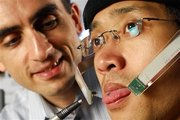
Item 6
Record
Numbers of Students Sign up for Advanced Math and Science Courses
Nearly 60 percent more students will be taking more challenging math and science courses at high schools in six states this fall, thanks to the National Math and Science Initiative, a nationwide effort to improve American achievement and competitiveness.
More than 13,000 students have enrolled in Advanced Placement* math, science and English courses in schools that have received support for AP training and incentives from NMSI, up dramatically from the 8,700 plus who enrolled last year.
"NMSI is working. We're proud that in just one year, this new national effort is already generating tremendous results," said Tom Luce, CEO of NMSI. "With even greater support for this critical initiative, we can ensure that America's next generation is better prepared to thrive in the global economy."
He added, "Eighty percent of the jobs in the future will require math and science skills -- so helping more students succeed in math and science classes must become an urgent priority."
The good news:
There has been a lot of hand-wringing of late about the sharp drop-off in enrollment by American students in science and technology college programs. In order remain competitive in a global economy, the US needs to ensure that our primary and secondary educational programs are world class and that students are being encouraged and equipped to study and take up careers in science and technology. It would appear that the Advanced Placement program is helping to address both of these urgent needs.
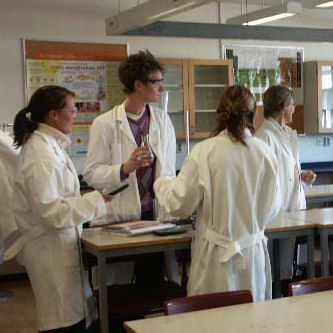
Top
Item 7
Cyanobacteria:
The Next Big Biofuel?
Could cyanobacteria eventually become a more popular biofuel than corn, sugarcane, or even algae? Quite possibly. According to Science Daily, cyanobacteria can convert up to 10 percent of the sun's energy into biomass.
This is a drastic improvement over the 1 percent rate of crops like corn and sugarcane, as well as the 5 percent rate of algae. With such a high conversion rate, cyanobacteria could replace a hefty amount of fossil fuels without taking up too much land.
At a recent conference organized by the European Science Foundation (ESF), participants discussed how photosynthesis evolved by cyanobacteria produced our current fossil fuel supply. Now the objective is to use those same reactions to produce more fuel—without taking fossil fuels out of the ground.
These reactions could theoretically be created with an artificial leaf system consisting of self-assembling nanodevices that regenerate themselves much like real plants and cyanobacteria do.
The good news:
The Peak Oil debate is one of those tiresome arguments that we don't like to spend a lot of time on around here -- not because running out of petroleum isn't a possibility or because the consequences of doing so wouldn't be serious, but simply because hitting Peak Oil is not the end of the story (and it certainly isn't the end of the world.) As FastForward Radio chat host Michael Darling explained it recently:
At $150/barrel there's plenty of oil- but it's a painful adjustment. At $300/barrel there will still be plenty- which is to say the market will clear. But it will be more painful if we haven't made some major adjustments.
Should we drill? Sure. Will it matter much? No.
Should we liquefy natural gas or convert internal combustion engines to run on CNG? Sure. But I want electric. And so will everyone else.
It's just like Y2K I look at it like this - if you're driving down a road and the road curves, you turn or you go off the road. If the road is on a mountainside- the turn is really intimidating and you portably slow down too. If the road is 6-lane divided road that's flat and well lit- you still gotta turn but no big deal.
We saw Y2K coming- we turned. We see peak oil (expensive oil) and we need to turn. We are. And by we I mean the leading edge R&D types- and my frustration is just that I'm a consumer who's ready for the 4g iPhone and Apple has just introduced the 3g. Or maybe I'm ready for the 6g.
If you're not optimistic, you're not paying attention.
Exactly. New potential fuel technologies are cropping up even faster than obesity cures. We have written recently that there is a lot of potential in algae-based fuels. An approach that converts solar energy to fuel twice as efficiently as algae is definitely worth a look. Barack Obama has just promised (if elected) to get America off foreign oil in ten years. It's a bold proposal. If we're going to do that, we're going to have to start moving ahead with flex fuels, with nuclear, and possibly with some intriguing developments with hydrogen.
Also bio-diesel, natural gas, wind power, clean coal, and cellulosic ethanol.
And maybe algae.
And maybe, just maybe, cyanobacteria.

Researchers at the Massachusetts Institute of Technology have combined a liquid catalyst with photovoltaic cells to achieve what they claim is a solar energy system that could generate electricity around the clock.
A liquid catalyst was added to water before electrolysis to achieve what the researchers claim is almost 100-percent efficiency. When combined with photovoltaic cells to store energy chemically, the resulting solar energy systems could generate electricity around the clock, the MIT team said.
"The hard part of getting water to split is not the hydrogen -- platinum as a catalyst works fine for the hydrogen. But platinum works very poorly for oxygen, making you use much more energy," said MIT chemistry professor Daniel Nocera. "What we have done is made a catalyst work for the oxygen part without any extra energy. In fact, with our catalyst almost 100 percent of the current used for electrolysis goes into making oxygen and hydrogen."
Currently, MIT is working with photovoltaic cell manufacturers to incorporate electrolysis using their catalyst into solar energy systems. By combining the two, excess capacity during the day could be stored as hydrogen and oxygen, then used in fuel cells at night when needed.
The Good News:
The big problem with the sun is that it's always setting just when you needed power for the other 12 hours of the day. The big problem with using hydrogen as a fuel is that it generally takes about as much energy to separate hydrogen and oxygen out from water as you then get burning the hydrogen. What we really need is a solar collection system that provides electrical power while the sun is shining and at the same time extracts hydrogen from water via some super-efficient catalytic process allowing us to burn hydrogen fuel cells when the sun isn't shining.
Yeah. Something like what these guys are doing. More details are available here.

Growing new ear hairs that can boost hearing: study
Scientists have used gene therapy on mouse embryos to grow hair cells with the potential to reduce hearing loss in adult animals, according to a study released Wednesday.
The proof-of-concept experiments are a crucial step toward therapies that could one day treat deafness and inner-ear disease in humans, said the study, published in the British journal Nature.
Sensory hair cells inside the cochlea, the auditory portion of the inner ear, convert sound waves into electrical impulses that are delivered to the brain.
The loss of these cells and the neurons they contain is the most common cause of hearing impairment and so-called nerve deafness.
At birth, humans have about 30,000 hair cells, which can be damaged by infections, ageing, genetic diseases, loud noise or treatment with certain drugs.
In most cases, damaged hair cells do not regrow in mature humans. But recent research has kindled hope that nerve deafness may one day be curable.
A team of scientists led by John Brigande at the Oregon Health and Science University, in Portland showed that implanting a gene known as Atoh1 into the inner ear of a mouse embryo coaxed non-sensory cells to become hair cells.
Earlier research had pointed to similar results, but this is the first study to show that the cells generated by the gene therapy are functional.
The production of extra, working hair cells in a mouse embryo could be an important step toward using similar therapies in human patients, the study said.
The Good News:
A powerful potential new treatment for hearing loss -- this is one of those that kind of speaks for itself.
On a Personal Note:
I'm having a birthday this week, and while I'm not yet old, exactly, I can tell you -- just to give you a range -- that I was born long after women got the right to vote, but before Dr. King gave the speech referenced above. That is to say, I'm reaching an age when a man starts to notice certain physical changes.
Look, my point is this: if there is some kind of upside to growing ear hair, I'm very glad to learn about it!

Better All The Time was compiled by Phil Bowermaster. Live to see it!





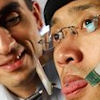
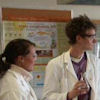


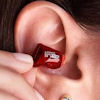



Comments
Great and fascinating collection. Thanks.
Posted by: vanderleun | August 30, 2008 09:26 AM
Check Obama's speech. He did not promise we would be off of imported petroleum in 10 years. What he said is that we would be off of oil imported from Saudia Arabia in 10 years, which, by the way, represents 16% of all imported oil. Rather disingenous, don't you think?
Frank
Posted by: Frank Wilson | August 30, 2008 09:26 PM
Actually, looking at the transcript, he said "oil from the Middle East."
Good catch, Frank.
I'm sure a helpful Obama supporter will step in to clarify -- how energy-independent does he actually propose to make us?
Posted by: Phil Bowermaster | August 30, 2008 10:33 PM
The 'Women's Vote' is a myth!
Senator Clinton and Governor Palin are proof that women can and do diverge on important issues.
Even on the question of whether women should vote!
Most people are totally in the dark about HOW the suffragettes won votes for women, and what life was REALLY like for women before they did.
Suffragettes were opposed by many women who were what was known as 'anti.'
The most influential 'anti' lived in the White House. First Lady Edith Wilson was a wealthy Washington widow who married President Wilson in 1915.
Her role in Wilson's decision to jail and torture Alice Paul and hundreds of other suffragettes will never be fully known, but she was outraged that these women picketed her husband's White House.
"The Privilege of Voting" is a new free e-mail series that follows eight great women from 1912 - 1920 to reveal ALL that happened to set the stage for women to win the vote in England and America.
It's a real-life soap opera!
Suffragettes Alice Paul and Emmeline Pankhurst are featured, along with TWO gorgeous presidential mistresses, First Lady Edith Wilson, Edith Wharton, Isadora Duncan and Alice Roosevelt.
There are tons of heartache on the rocky road to the ballot box, but in the end, women WIN!
Thanks to the success of the suffragettes, women can now support the candidates they choose, left, right, in-between or GREEN!
Exciting, sequential e-mail episodes are perfect to read on coffeebreaks, or anytime.
Subscribe free at
www.CoffeebreakReaders.com/subscribe.html
Posted by: Virginia Harris | August 31, 2008 01:02 PM
Here's some info on what Barack Obama will be doing with regard to Middle Eastern/Venezualan fossil fuel. BTW, you can easily access information on where Obama stands by going to www.barackobama.com and click on issues. Lots of information.
Eliminate Our Need for Middle Eastern and Venezuelan Oil within 10 Years
Increase Fuel Economy Standards.
Obama will increase fuel economy standards 4 percent per year while providing $4 billion for domestic automakers to retool their manufacturing facilities in America to produce these vehicles.
Get 1 Million Plug-In Hybrid Cars on the Road by 2015.
These vehicles can get up to 150 miles per gallon. Barack Obama believes we should work to ensure these cars are built here in America, instead of factories overseas.
Create a New $7,000 Tax Credit for Purchasing Advanced Vehicles.
Establish a National Low Carbon Fuel Standard.
Obama will establish a National Low Carbon Fuel Standard (LCFS) to reduce the carbon in our fuels 10 percent by 2020. Obama will also require 60 billion gallons of advanced biofuels to be phased into our fuel supply by 2030.
A �Use it or Lose It� Approach to Existing Oil and Gas Leases.
Obama will require oil companies to develop the 68 million acres of land (over 40 million of which are offshore) which they have already leased and are not drilling on.
Promote the Responsible Domestic Production of Oil and Natural Gas.
An Obama administration will establish a process for early identification of any infrastructure obstacles/shortages or possible federal permitting process delays to drilling in the Bakken Shale formation, the Barnett shale formation, and the National Petroleum Reserve-Alaska.
Link to video on Obama's energy plan:
http://my.barackobama.com/page/content/newenergy_more#relief
Posted by: Mary O'Neil | August 31, 2008 05:11 PM